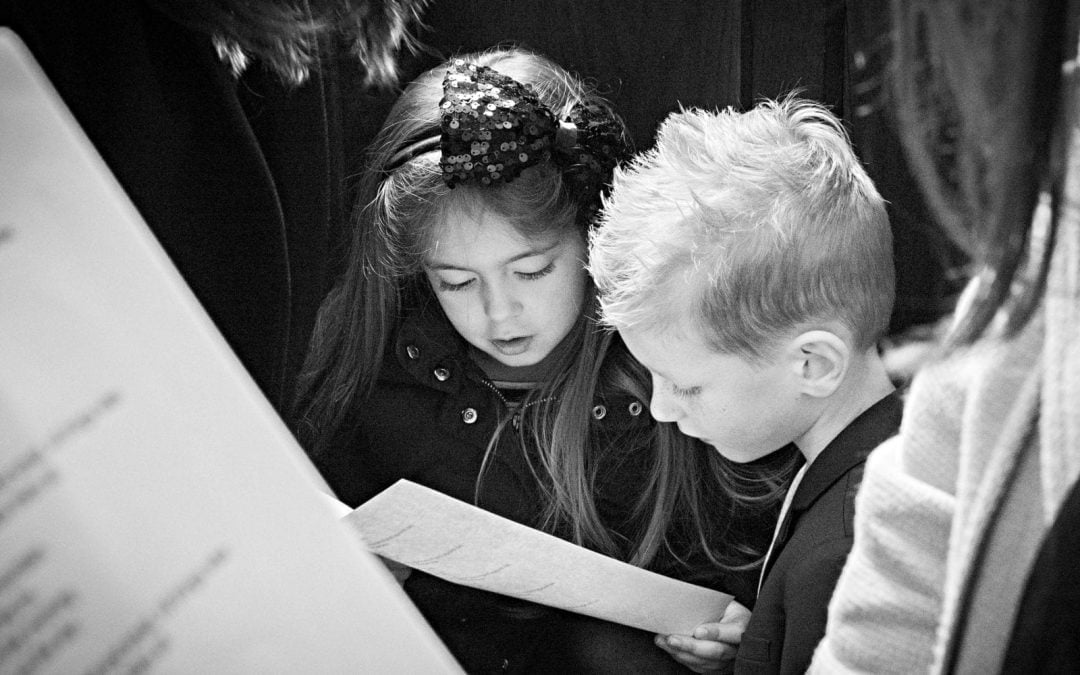What if?
This question has inevitably arisen at some point in the many conversations about intergenerational worship and generational discipleship that I’ve had over the years.
For example, if we talk about including children in the corporate worship time, the “what ifs” include:
- What if the kids talk or “whisper loudly”?
- What if they cry or whine or whimper or wail?
- What if they are bored?
- What if they wiggle, squirm, move around, have to pee or get up and walk around?
- What if they are distracting to the adults, their parents or the older generation?
Or if we talk about holding an event that is open to all generations, the “what ifs” are more like this:
- What if the generations don’t talk to each other or can’t relate to each other?
- What if the time, place, topic and so on don’t work for this group or that group?
And if we talk about including the children and youth in serving within the church community, the “what ifs” are more along the lines of:
- What if they don’t show up or work hard?
- What if they are irresponsible or do things incorrectly?
- What if there are not enough adults to volunteer to supervise them so they just get in the way?
- What if someone gets upset because they want it done a certain way or they think it’s their role in the church?
So, let’s talk about it. What if all the “what ifs” happened?
Would it wreck the church? Would there be irreversible damage? Would there be no recourse but to just say, “It’s over. Throw in the towel. Intergenerational ministry just doesn’t work?”
Are the risks really so great that if all of the greatest fears happened, if all of the “what ifs” came true, it’d be too much to even try?
The “what ifs” overlook research and studies, both secular and religious, that have revealed significant positive results of intergenerational ministry and relationships, including:
- Reduced “dropout” of young people once they graduate from high school
- Increased spiritual growth for the entire church
- Mature faith in young adults
- Sense of belonging and meaning for children
- Stronger community of faith across the board
What if all the “what ifs” happened but so did all the other things?
What if young people remained in the faith and in the church after they graduated high school as opposed to the current trend of rapid decline in both?
What if the entire church experienced overall spiritual growth, and vibrancy in the congregational community was heightened (or as the researchers at Fuller Youth Institute put it, “Warm intergenerational relationships grow everyone young.”)?
What if college students had a mature and well-developed faith that was able to carry them through their college years and into healthy marriages and parenting roles?
What if children recognized themselves as part of the larger faith community, not separate or somehow lesser than, but genuinely a needed and necessary piece of the church as a whole?
What if the church grew stronger together, sharing not only a building during a certain period of time each week, but worship and relationship and creativity and fellowship that even carried over to life outside the walls?
Would it be worth it then? To hear some cries, to watch some wigglers, to have to hear music we didn’t necessarily like or see something done differently than it was before?
Would it be worth some distraction, an interruption, some inconvenience or some sacrifice?
What if all the “what ifs” happened and we decided beforehand that it was OK because it was, most certainly, worth it.
Because, my experience has been, and others attest, that all of these “what ifs” don’t usually happen and certainly don’t usually happen all at once.
And there are ways to help make sure that if they do, there are tools and structures and support in place to ensure that they don’t cause irreparable damage.
And in the end, is it really a risk? Or just a stretch?
It really only requires a willingness to be a little uncomfortable in order to grow, to learn, to experience something that may seem new to us but is actually the way things were for centuries; the way our faith was passed to us – from one generation to another (Psalm 145:4).
What if?
Editor’s note: A version of this article first appeared on Embree’s blog, Refocus Ministry. It is used with permission.
A church planter with Plowshares Brethren in Christ in Lexington, Kentucky, she is a graduate of Wesley Seminary with a Master of Arts degree in ministry focusing on family, youth and children’s ministry.


